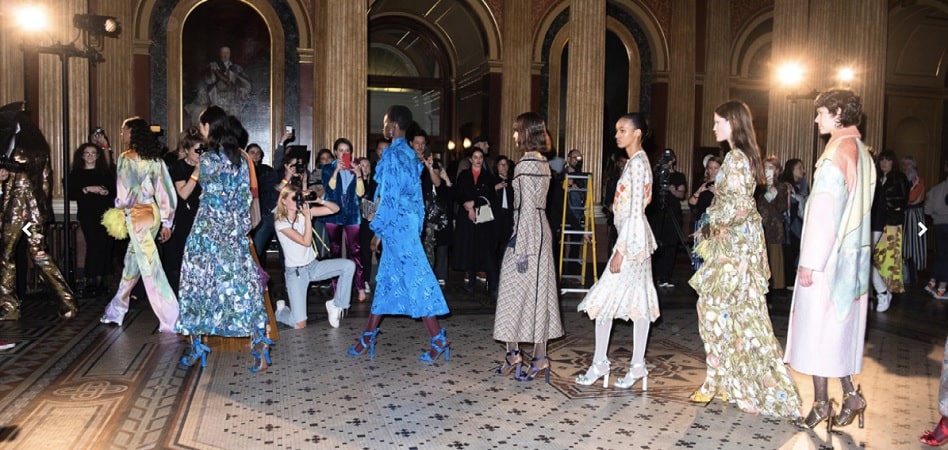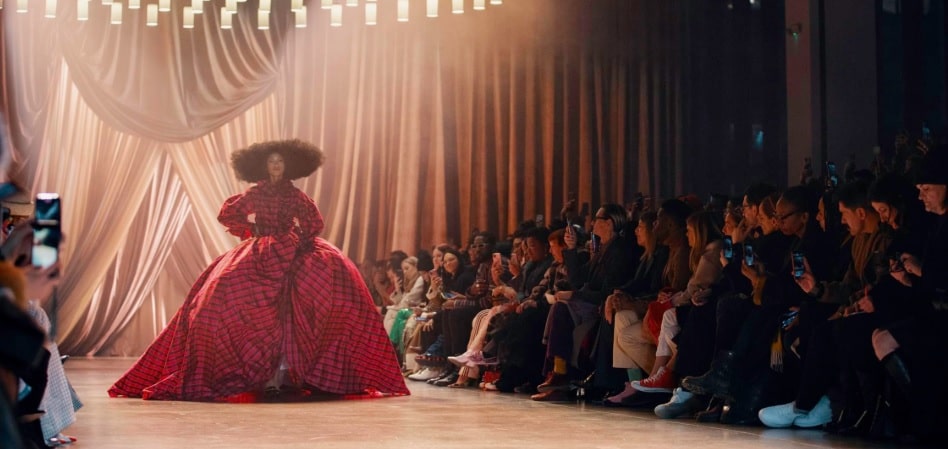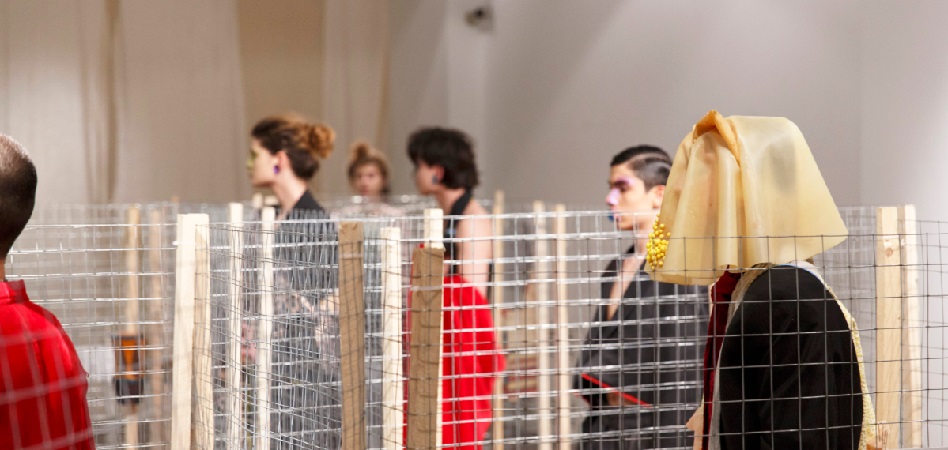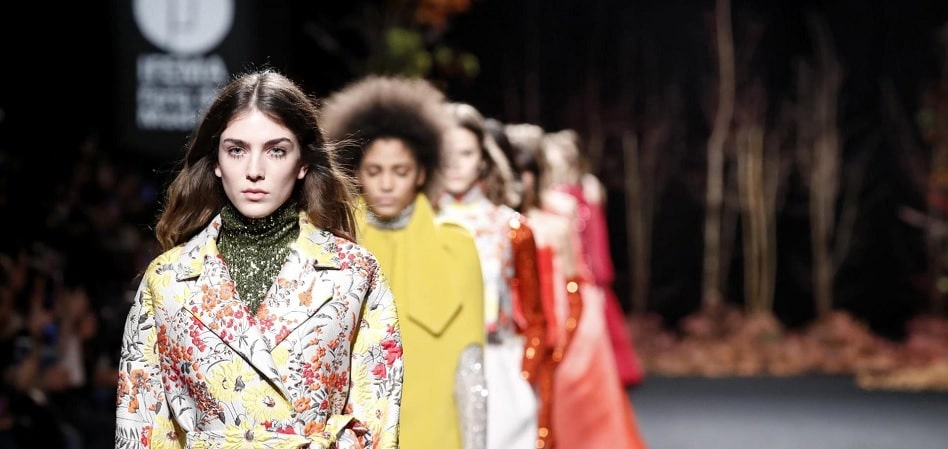From Paris to New York and from Nigeria to Bogotá: fashion shows around the world
In recent years, cities such as Copenhagen, Bogotá or Sydney have launched events that promise to become the driver of the new prospects of design in the world.

Paris as a synonym for luxury, London at the forefront, New York image of urban fashion, and Milan a reflection of Italian chic. The four major catwalks are the most consolidated after many years of touring, but in recent years cities such as Copenhagen, Bogotá or Sydney have launched events that promise to become the driver of the new prospects of design in the world.
Catwalks began at the beginning of the twentieth century as a formal exercise, with the aim of showing the latest news to select clients of a brand so that, subsequently, they made an order of the desired models. From the fifties, catwalks began to become a marketing strategy, and in the nineties, they had their boom and became mainstream with the arrival of supermodels.
Today, catwalks endure a moment of transition and an identity crisis. According to Pedro Mansilla, an expert in the sector, “the model is sold out.” “Catwalks are very expensive (the setting up of a fashion show cost between 50,000 euros (54,184 dollars) and five million euros (5.4 million dollars)) and with social networks, it has lost the axis”, explains the expert. According to Mansilla, fashion shows only make sense for brands that are already fortified, such as Chanel, or for emerging ones that want to get media attention.
However, the giants of the sector continue to climb catwalks to present their collections each season. From Paris to New York and from Nigeria to Bogotá, each gateway has its identifying features that also define the brands that parade on them. What are the most consolidated values and emerging names of the global atlas of fashion shows today?

Paris, the guardian of luxury
Paris fashion week continues to have its predominant and reference role. It is the most important, the one that marks the international calendar and the one that generates a greater economic impact, of around 1.2 billion euros (1.3 billion dollars) per year, according to the organization Fédèration de la Haute Couture et de la Mode, promoter of the event. It’s the most notable brands that parade along the catwalk of the French capital, such as Chanel, Dior, Givenchy, Valentino or Maison Margiela.
To be part of the official calendar of the Paris fashion week, which takes place twice a year, it is necessary to comply with a series of rigorous standards. Each company that wants to parade must organize private showrooms in Paris, own a workshop with at least fifteen workers and present a collection composed of at least 35 outfits.
However, the Fédèration de la Haute Couture et de la Mode invites new companies to participate in the Paris Fashion Week in each edition, although they do not meet all the requirements. In recent years, Spanish companies such as Oteyza, Yolancris or Palomo Spain have been on the catwalk of the French capital.

London, synonymous with avant-garde
Organized by the British Fashion Council, London fashion week is another of the most important in the international calendar. Its defining feature is that of the avant-garde since it is the event that welcomes the most news of all those celebrated in the world.
Names like Burberry, Christopher Kane, JW Anderson, Mulberry, Tommy Hilfiger, Victoria Beckham or Viviene Westwood are some of the most recognized among the 150 who parade during the day and generate an impact of 269 million euros, according to the organization.
“It’s starting to gain more weight,” explains Pepa Bueno, executive director of the Association of Fashion Creators of Spain. Recently, the catwalk has taken a step further in innovation announcing the creation of a program of events parallel to the parades with the objective of opening the catwalk to the final public.

Milan, flagman of the ‘made in Italy’
Italian luxury as a symbol of differentiation. Canera Bazionale della Moda Italiana has managed to make the Milan fashion week a benchmark and has found its own place in the international calendar. The event generates an economic impact of almost two hundred million euros in each edition, according to the organization.
With Gucci, Versace, Dolce & Gabbana, Salvatore Ferragamo, Giorgio Armani, Prada or Dsquared2 in front, Milan’s fashion week has become a symbol of Italian luxury, more opulent than French.
In recent years, with the boom of designers who conquer the masses such as Alessandro Michele or Jeremy Scott, Milan fashion week has managed to maintain its leadership as one of the most important in the international calendar with the participation of more than 250 Business.

New York, urban fashion image
“Less fantasy and creativity and more connection with the prêt-á-porter”, according to Bueno, these are the identity features of the New York fashion week, promoted by the Council of Fashion Designers of America (Cfda). According to the organization, the economic impact of this event is estimated at 887 million dollars.
However, although the gateway to the Big Apple is synonymous with modernity and everything that has to do with the cool, in recent years has lost weight. “He is in a difficult time,” says Bueno. Currently, the event is focused on reviving the appeal that Calvin Klein, Marc Jacobs or Rodarte once established.
Heavy weights such as Tommy Hilfiger, Thom Browne, Proenza Schouler or Rodarte have been lowered in the last years of the New York catwalk. The last to go into exile was Tom Ford (president of the Cfda) who has decided to parade in Los Angeles, a catwalk that is gaining more and more weight and takes advantage of the call of celebrities to the Oscars gala to attract the elite audience .
Beyond the big four of the international catwalks, in recent years they have gained weight emerging events that combine new formats and bet on trends such as sustainability or open their doors to the end consumer, in addition to being the vehicle of the designers of the future.

Copenhagen, the rise of the ‘eco’
“It is interesting how he has managed to combine all Scandinavian fashion,” says Pepa Bueno about the Copenhagen fashion week. The capital of Denmark has consolidated the event as a more avant-garde commitment focused on sustainability.
In fact, according to the expert, unlike other events, the Copenhagen fashion week parades serve as an accompaniment to the main day , which is the Copenhagen Fashion Summit, an event that brings together the main operators and voices of the sector to discuss the role of the fashion industry in the face of climate change.
Ganni, By Malene Birger and Baum und Pferdgarten are some of the companies that participate during the event, which is promoted by the Ministry of Industry Business and Financial Affairs of Denmark.

Nigeria, the cradle of emerging design
Lagos Fashion Week, launched in 2011 by Omoyemi Akerele, is one of the most consolidated events on the international catwalk scene and the greatest exponent of African fashion.
The objective of Lagos fashion week, in addition to the presentation of the collections of the most important designers in the region, is to boost and strengthen the African fashion industry.
Beyond the parades, the event also has two platforms to strengthen the industry: Fashion Business Series and Fashion Focus, which offers master classes and provides support to emerging brands in the region.

Tbilisi, center of Caucasian fashion
The capital of Georgia has also become one of the main emerging fashion runways. Powered by Mercedes Benz in 2009, the catwalk gained notoriety by being the home of Demna Gvsalia, founder of Vetements and current creative director of Balenciaga. During the day, which is held twice a year, more than seventy designers from the region participate.
The ‘momentum’ of Bogotá
“I think Colombia is becoming a focal point in the region thanks to universal recognition, now international buyers want to come to the country’s catwalks to see what is happening in the industry,” says Diana Hochman, of the Bogota Fashion Week team.
With the Bogota Chamber of Commerce in charge, the fashion week of the Colombian capital also has educational workshops and an accompanying program for emerging designers in the region. On the catwalk around 135 brands parade.

Shanghai and Sydney, the jewels of the Pacific
Asia also hosts several international catwalks that have gained weight in recent years. This is the case of Shanghai Fashion Week, Mode Shanghai Apparel Exhibition, promoted since 2013 by the Ministry of Commerce of China.
The day, in addition, is celebrated by several international fairs and aims to promote the improvement of the value chain of the fashion industry, while meeting the individual needs of the national fashion retail market. Designers such as Zhang N, Moti Bai, CJ Yao, Momo Wang or Nicole Zhang participate in the event.
Born in 1996 at the hands of former reporter Simon Lock, Sydney Fashion Week has become one of the most important in the Pacific, where companies such as Lisa Ho, Alex Perry, Zimmermann, Toni Maticevski, Collette Dinnigan, Leona parade Edmiston, J’Aton Couture, Ericaamerica, Easton Pearson and Gwendolynne.
Powered by the giant International Management Group (IMG) and sponsored by Mercedes Benz, the event gives special attention to emerging designers in the region. In its latest edition, the catwalk decided to follow in the footsteps of London’s fashion week and opened its doors to the final public.
Specifically, during the five days of the day, Sydney Fashion Week reserved 25% of the seats for consumers. In addition, the entrance, whose price amounted to $119, also gave access to the final public to seminars and other special events during the day.

Madrid, looking for a speech
“Madrid needs a speech of its own to be recognized,” explains Pepa Bueno. The Mercedes Benz Fashion Week Madrid, promoted by Ifema, is one of the most recognized events in the fashion sector in Spain.
Currently, the event is in search of its own space on the calendar, since, according to Nuria de Miguel, at the head of the event “the Madrid catwalk has an international vocation”.
37 Spanish designers such as Ana Locking, Devota & Lomba, the 2nd Skin Co, Agatha Ruiz de la Prada, Pedro del Hierro, Custo Barcelona, Angel Schelesser, Brain & Beast, Devota & Lomba, Andres Sardá or Juan Vidal, among others, participated in their last call. The next edition of the catwalk will take place between September 2 and 7.
Participating in the Mercedes Benz Fashion Week Madrid involves a cost of between 6,000 and 15,000 euros of the entrance fee for companies in the sector, depending on whether they organize their parades in the Ifema enclosure or in other locations such as the Crystal Palace. The economic impact of the day is around twenty million euros, according to the direction of the catwalk


info@themds.com
Validation policy for comments:
MDS does not perform prior verification for the publication of comments. However, to prevent anonymous comments from affecting the rights of third parties without the ability to reply, all comments require a valid email address, which won’t be visible or shared.
Enter your name and email address to be able to comment on this news: once you click on the link you will find within your verification email, your comment will be published.